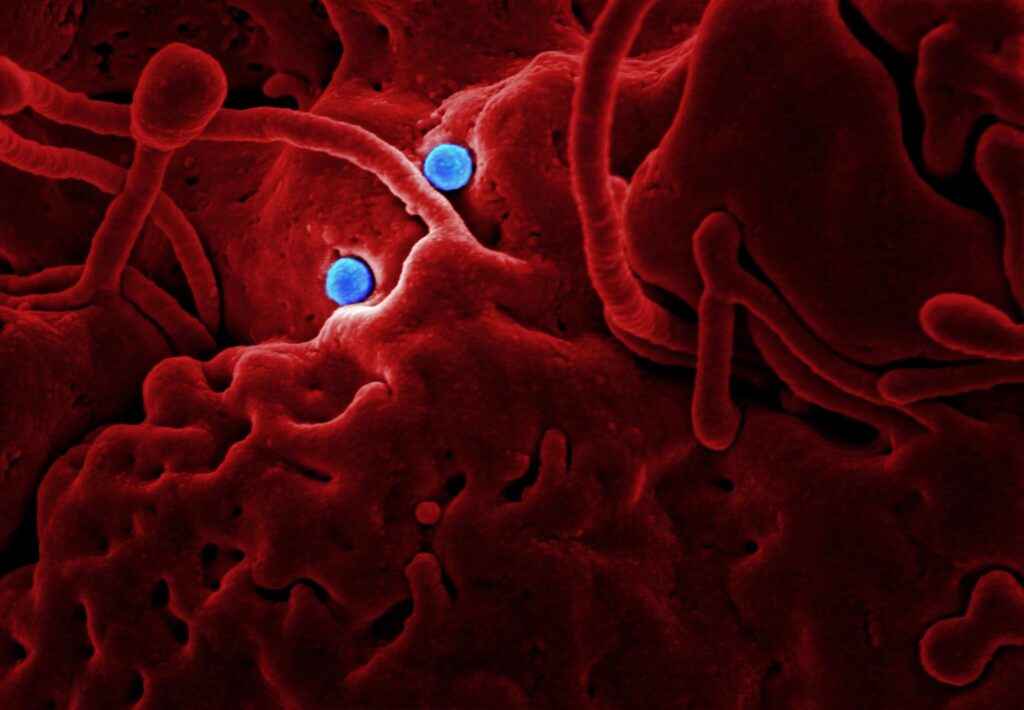Inappropriately stored foods can contain dangerous, harmful bacteria, viruses, parasites and chemical substances that are dangerous to health and may cause several diseases ranging from diarrhoea, through meningitis to cancers, where the most common is diarrhoea related to consumption of contaminated food(1).
Foodborne illnesses
Major illnesses related to the consumption of contaminated food can be very dangerous. Illnesses caused by most pathogens usually manifest themselves through diarrhoea and nausea, which can both cause severe dehydration. In some cases, dehydration might be severe to the point, where it causes danger of death. Chemical contaminations may manifest themselves through acute poisoning and may even lead to long-term complications and diseases, for example, cancer, disabilities and death.
Examples of foods that can cause infections are(2):
- Raw and undercooked meats may contain Campylobacter, Salmonella, Clostridium perfingens, E. coli, Yersinia and other bacteria
- Unwashed fruits and vegetables may contain Salmonella, E. coli and Listeria bacteria
- Raw dairy may be contaminated with Campylobacter, Cryptosporidium, E. coli, Listeria and Salmonella
- Raw eggs may be contaminated with Salmonella
- Seafood and raw shellfish, such as oysters can be contaminated by norovirus
- Raw sprouts such as lucerne or beans may be contaminated with Salmonella, E. coli or Listeria bacteria
- Raw flour is a product that has not been treated typically to kill germs, thus it might be contaminated with them
Foodborne illness is caused by pathogens in most cases
When it comes to the effects of ingesting contaminated food, typical results for poisoning by certain pathogens or substances are(1):
- Bacteria such as Salmonella, Campylobacter, and Enterohaemorrhagic Escherichia coli (most common foodborne pathogens) infect millions of people annually. They cause symptoms such as fever, headache, nausea, vomiting, abdominal pain and diarrhoea.
- Listeria infection can lead to miscarriage in pregnant women or death in newborn babies. The occurrence of Listeria contamination is relatively low, however, it causes a very serious illness that may cause death.
- Vibrio cholerae bacteria causes abdominal pain, vomiting and watery diarrhoea that may lead to dehydration and possibly death
- Viruses such as norovirus typically cause nausea, explosive vomiting, watery diarrhoea and abdominal pain
- Hepatitis A virus causes long-lasting liver disease
- Parasites, e.g. as fish-borne trematodes can cause serious diseases, such as cholangitis, choledocholithiasis, pancreatitis and cholangiocarcinoma (3). Tapeworms such as Echinococcus spp or Taenia solium cause nausea, weakness, loss of appetite, abdominal pain, dizziness, salt craving, weight loss and inadequate absorption of ingested nutrients (4)
- Prions are infectious agents composed of protein and they are associated with specific forms of neurodegenerative diseases, such as bovine spongiform encephalopathy
- Naturally occurring toxins such as mycotoxins, marine biotoxins, cyanogenic glycosides and toxins that occur in poisonous mushrooms can affect the immune system, normal development or even cause cancer if exposure to them is long term
- Persistent organic pollutants such as dioxins or polychlorinated biphenyls are highly toxic and cause reproductive and developmental issues, damage the immune system, may cause cancer and interfere with hormones
- Heavy metals e.g. lead, cadmium and mercury cause kidney and neurological damage
To summarise risks associated with the consumption of contaminated food are several illnesses, of which some may cause long-lasting damage such as neurodegenerative diseases, may cause organ dysfunction, affect hormones or even death. Ingesting contaminated food is very dangerous, thus certain efforts are taken to prevent such occurrences from happening. As mentioned before diarrhoea, vomiting and stomach pain are not the only risks associated with eating polluted foods and even diarrhoea or vomiting usually perceived as potentially harmless can lead to severe dehydration or even death. Some of the pathogens may also cause high fever, which is also hazardous to human health.
References:
- WHO, Food Safety, accessed on 08/05/21, available at: https://www.who.int/news-room/fact-sheets/detail/food-safety
- CDC, Foods That Can Cause Food Poisoning, accessed on 08/05/21, available at: https://www.cdc.gov/foodsafety/foods-linked-illness.html
- Nguyen Mang Dung et. al. (2015), Current status of fish-borne zoonotic trematode infections in Gia Vien district, Ninh Binh province, Vietnam, available at: https://parasitesandvectors.biomedcentral.com/articles/10.1186/s13071-015-0643-6
- Mayo Clinic, Tapeworm infection, accessed on 08/05/21, available at: https://www.mayoclinic.org/diseases-conditions/tapeworm/symptoms-causes/syc-20378174




